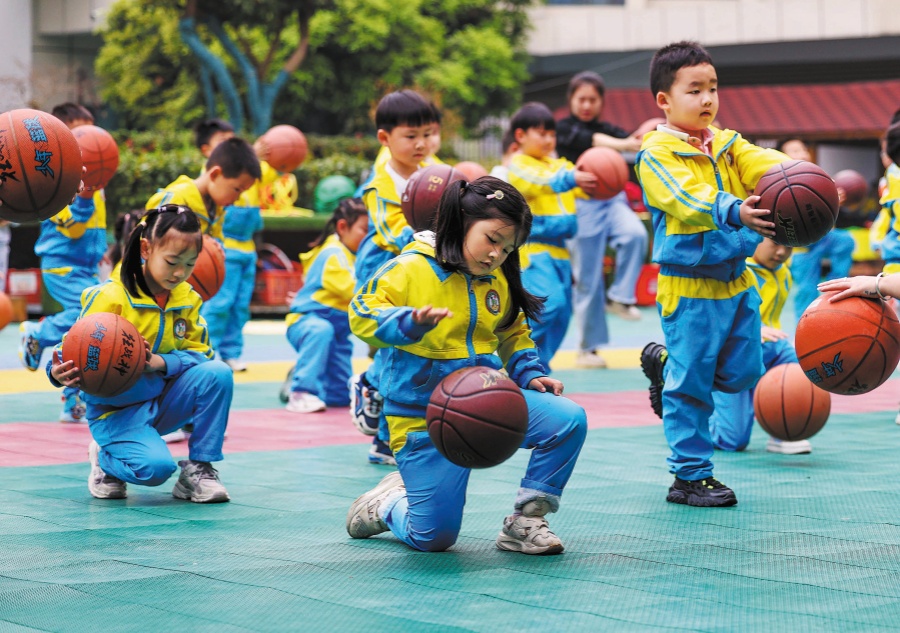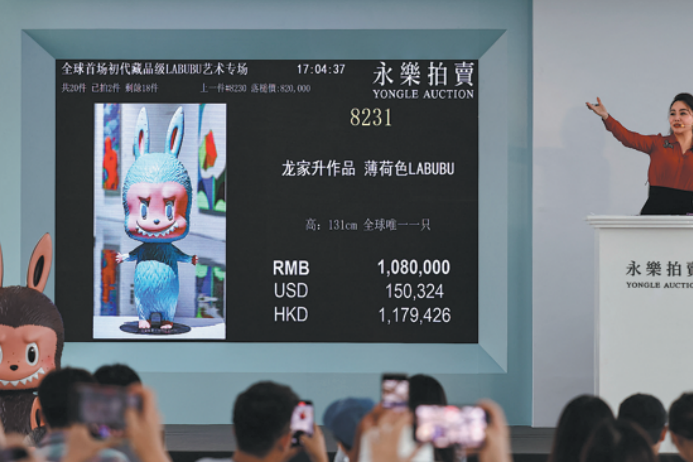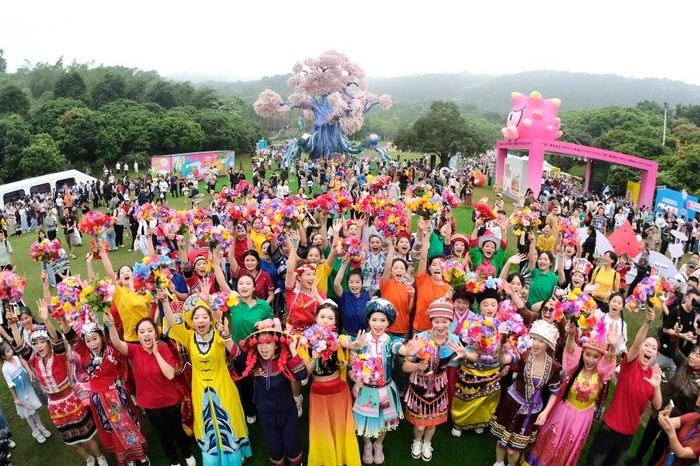Falling births trigger calls for reallocating preschool resources
Kindergartens could be integrated with childcare services, experts say


With enrollments falling, China's excess kindergartens could be transformed into daycare centers to make up for a shortfall in the nation's childcare resources and to relieve burdens on parents, according to an education expert.
There were 274,400 kindergartens in China last year, with 40.93 million children enrolled, the Ministry of Education said at a news conference last month.
The number of preschool children last year dropped 5.35 million from 2022 and has seen a decrease for three consecutive years, according to the National Bureau of Statistics.
Xiong Bingqi, director of the 21st Century Education Research Institute, said the decline of children in kindergartens is closely related to the decrease in births since 2017.
The nationwide peak in births in 2017, a direct result of the two-child policy implemented in the early 2010s, had the knock-on effect of peaking kindergarten enrollment in 2020 at 48.18 million, its highest point in 17 years.
"Since 2020, the number of kids entering kindergartens has reduced, and it will keep dropping rapidly in the future in line with the declining birth rate," Xiong said.
Births in China in 2021, 2022 and 2023 were 10.62 million, 9.56 million and 9.02 million respectively, according to the NBS.
By 2026, with all children born from 2021 to 2023 enrolled in kindergartens, the total number of preschoolers will be just over 29 million, which is about 12 million fewer than last year, Xiong said.
"It is essential to plan for the development of preschool education based on changes in birth rates," he said.
"If the teacher-to-child ratio remains at the current level, many kindergartens may face closure, and early childhood educators might be at risk of unemployment," Xiong said.
Guo Peng, head of the ministry's department of development planning, said the number of full-time teachers in preschool education hit 3.07 million last year, with one teacher for every 13 children, an improvement from one teacher for every 16 children in 2022.
To address the inevitable surplus of kindergarten capacity, many sites could be turned into inclusive childcare facilities, according to Xiong, accommodating children under the age of 3 and also addressing the national shortage in childcare.
"Childcare services for children age 0 to 3 in China are mainly provided by private institutions, leading to a lack of spaces and difficulty getting in," he said.
Health authorities have been promoting childcare development and encouraging social entities to establish childcare facilities.























